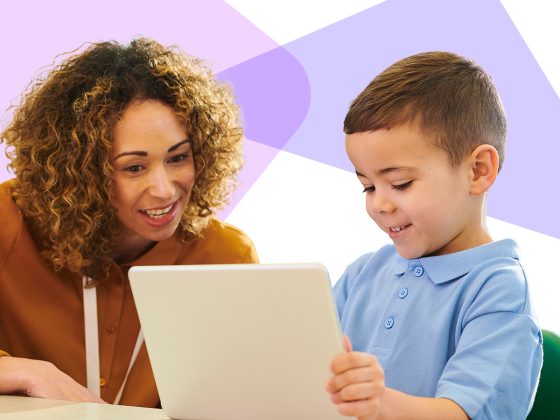
Building and Rebuilding Language Skills—and Community!
An article about building children’s language skills by enriching your interactions.
Children’s language development is shaped by talking with, and listening to, many different people in different contexts over the course of a day. Research has proven that rich back-and-forth conversations with adults grow children’s vocabulary, which then helps them as they formally learn to read.
However, those conversations quieted during the more isolated days of the pandemic for many children. Many of us were disconnected from friends, family, and communities where learning happens: classrooms, daycares, neighborhoods, and more. Many children suddenly lost the in-person presence of a “circle of care”—caring adults such as teachers, reading specialists, speech-language pathologists, tutors, coaches, and so on, during a critical period of brain development. Parents had to fill the gap, and that was likely a challenge.
If we think of conversations and interactions as deposits in children’s “language banks,” it’s easy to see that deposits of important “funds” dropped off sharply. The good news is that children’s brains are malleable and can recover from less-than-ideal circumstances—and that you, as a caring adult in the lives of young children, can add rich language into your interactions with children, even if those interactions are just a few seconds!
Learning to read is a social process—think of sharing books at circle time in an early childhood classroom. Reading helps us make sense of the world and each other. Back-and-forth conversations benefit children’s language development—and ultimately, their success as readers—in so many ways:
- They hear and learn new vocabulary in context.
- They are exposed to longer, more complex sentences than the ones they are able to produce themselves.
- They build social and emotional skills, understanding that others have thoughts and opinions that differ from their own. This is the beginning of empathy!
- They learn what topics are appropriate and how to stay on topic.
So how can we “reset”… and help make up for what may have been lost? It takes a village, and all adults serving children (not just teachers!) can pitch in to build successful readers. Consider these ways of enriching your interactions with children, and use open-ended questions based on what you know about the child’s life. Wait for children to respond (it may take longer than you think!), listen closely, and keep the conversation going a bit longer by talking about your own ideas or asking them more about what they’ve shared. Let them know you’re genuinely curious!
In the morning, you might ask:
- “What are you most looking forward to today?”
- “What was the best thing you did last night?”
- “What did you have for breakfast?”
In brief passing encounters throughout the day, you might say, for instance:
- “Looks like a fun game you’re playing. What are the rules?”
- “It’s going to rain. What’s one good thing about a rainy day? I like getting cozy once I get home.”
At the end of the day, encourage children to talk with their families about their day. (“What will you tell Uncle Joe about what you did today?”)
Spoken language is the building block for literacy. Your words—and how many of them you use with children—matter. Every conversation you have with a child impacts how they learn!
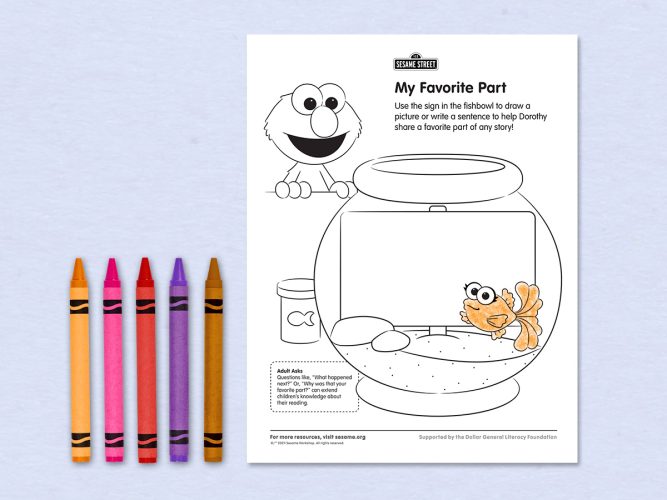
My Favorite Part
Help little ones share special parts of stories in words and pictures.
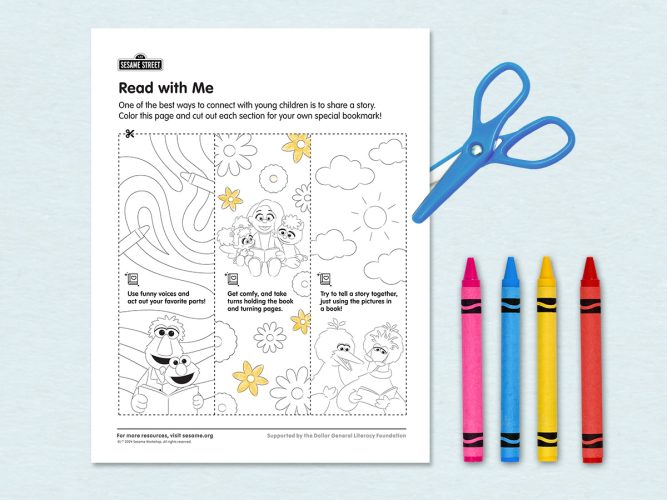
Read with Me
Track your reading progress with some printable bookmarks!
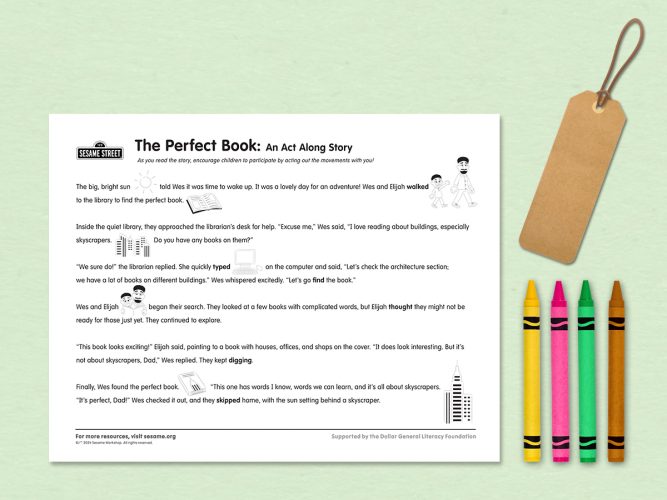
The Perfect Book: An Act Along Story
Make story time more engaging by encouraging children to act out what they hear!
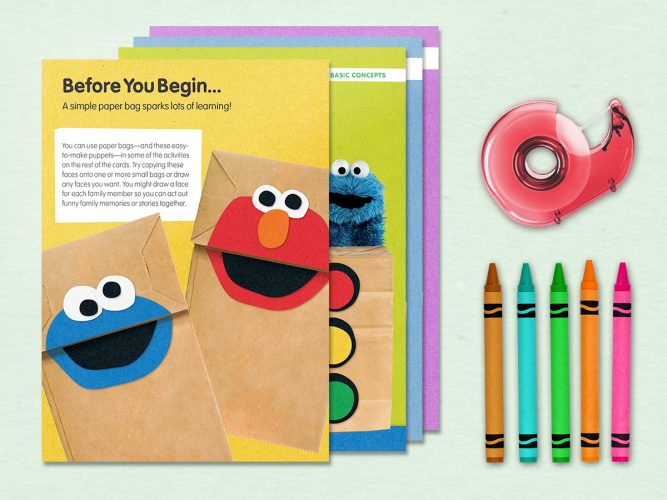
Learn & Grow: Inside, Outside, on the Go
Learning can happen anytime, anywhere—inside, outside, or on the go!
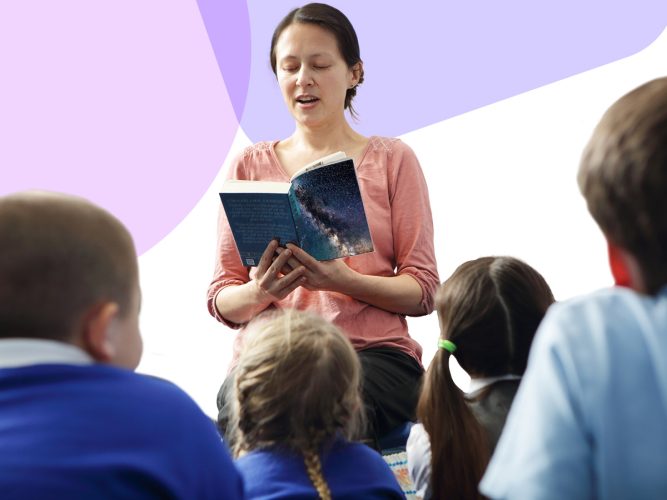
A Mighty Voice
Finding confidence in the ways that you tell stories will make them even more special to the children you share them with.
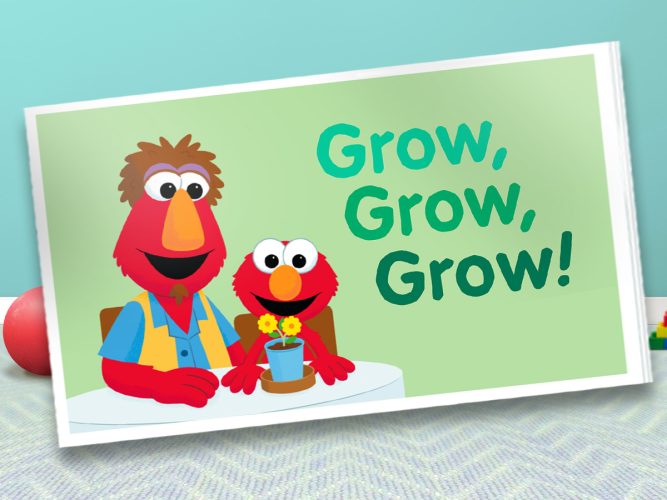
Grow, Grow, Grow!
A story about Elmo and his daddy using a book to grow a flower.
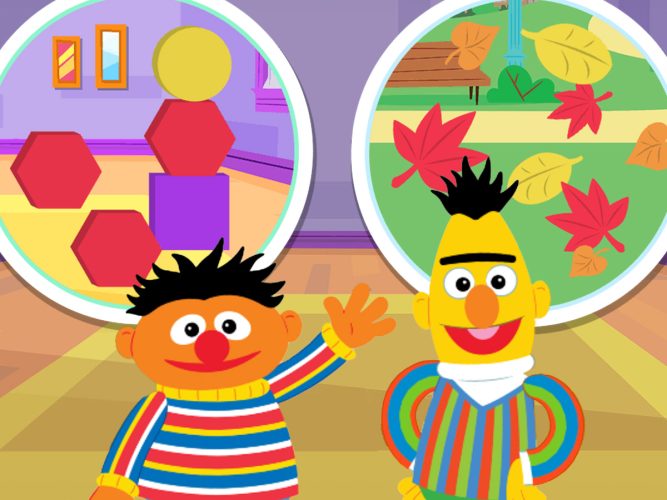
Inside, Outside With Bert & Ernie
Children can play—and learn!—along with Bert and Ernie as they observe and notice, gather and collect, sort and match, and use clues that build reasoning skills.
